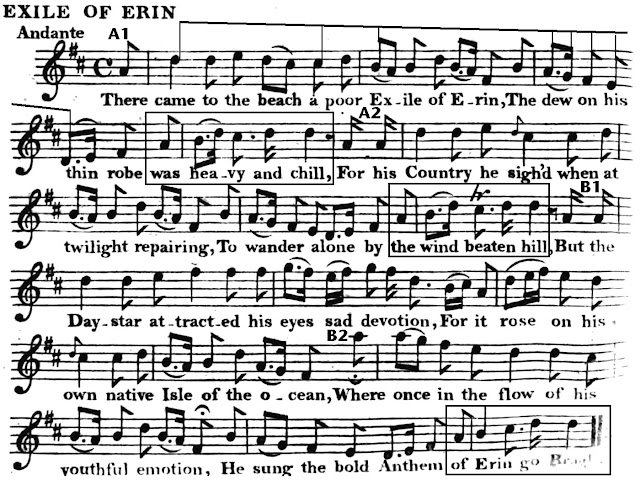Ball's Musical Cabinet, or Compleat Pocket Library for the Flute, Flaeolet, [sic] Violin &c. was published about 1820, according to its IMSLP page: link. I have no further information about it, but the date, if broadly taken, is plausible: many such inexpensive collections of well-known dances and songs were published in the first half of the nineteenth century. The evidently poor quality of the paper suggests earlier rather than later.
From this volume, I have extracted three dance-songs, all of which are very well-known. The "Exile of Erin" focuses on ^8, to which its figures continually return. The opening of B1 and B2 offer the "play in a register above" that one commonly finds in these subordinate form sections (not unrelated, in affective and functional terms, to the bridge in the American ballad standard). Here the repetitions of the rising cadence (boxed) carry particular weight, as their last appearance sets "Erin go Bragh."
The main theme phrase expresses a mirror figure, ^8 down to ^5, then up again:
"Kitty of Coleraine" would make an interesting study of the play of registers, but I will confine myself here to the main shapes of lines -- these are neighbor note figure about a constant ^8. In the main cadences—lines four and eight—a line returns to ^8 from below.
"Robin Adair" is a straightforward example of the case where a framing sixth, ^5 below, ^3 above, or A4-F#5 here, generates a wedge figure converging on the tonic note, here D5. I have sorted this out in the graphic below the score.





